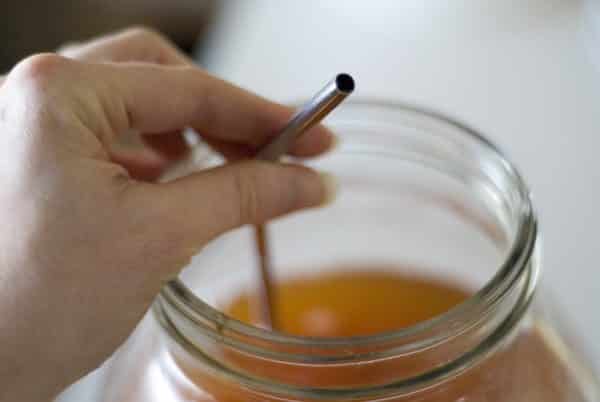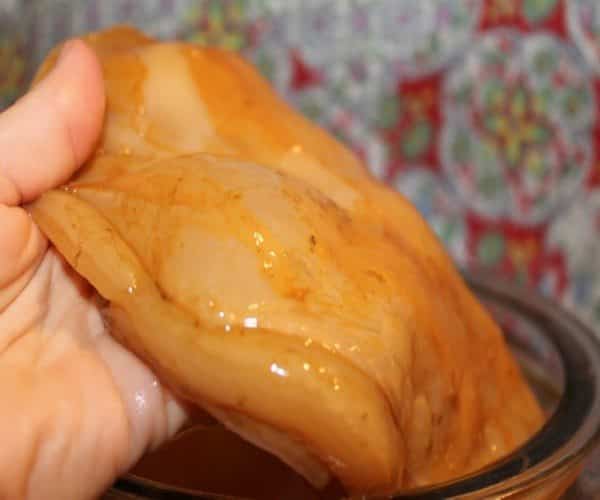How To Activate A Dehydrated Kombucha SCOBY
With the ever-growing popularity of home-brewed kombucha, it’s getting easier and easier to find trusted sources for SCOBYs, whether those are online sellers, local brewery and homesteading shops, or even a friend of a friend. Most of the time you’ll be getting an active SCOBY that’s stored and/or shipped in a few ounces of “starter,” which is the concentrated kombucha tea that maintains the SCOBY at the right acidity and nutrient level. However, depending on where you live and what time of year it is, you might not be able to get an active SCOBY easily. In this case, you’ll need to buy a dehydrated SCOBY and rehydrate it before you start brewing.
About SCOBY Dehydration and Rehydration
When something is hydrated, it means that it contains water. Dehydration takes that water out; rehydration puts it back in. When it comes to a SCOBY (a Symbiotic Colony Of Bacteria and Yeast) the microorganisms that form the colony are able to survive the dehydration process for a limited period of time. If the SCOBY was properly dehydrated, you shouldn’t have any problem rehydrating it and starting your kombucha brewing cycle. However, you may have problems if:
- the SCOBY was not dehydrated correctly
- the SCOBY has been dehydrated too long
- the dehydrated SCOBY has gotten too hot or too cold
- the rehydrating liquid does not contain enough acid
- the rehydrating liquid does not contain enough sugar
- the rehydrating liquid does not stay at the right temperature
Follow the instructions below to get the best results when rehydrating a dehydrated SCOBY.
Shipping and Storage
Most rehydrated SCOBYs are sold on line, though you may find some from a local retailer. If you get your SCOBY shipped to you, make sure you are available to pick up the package. If the package is left outside in freezing weather or the full heat of the summer sun, it may affect the SCOBY inside.
Once you get the SCOBY, unwrap the package and store the SCOBY in its plastic container at room temperature, in a dim or dark place. The SCOBY should stay at a temperature of between 70-75F for the best results. You can store your SCOBY at room temperature for up to a month.
Some people have successfully stored their dehydrated SCOBY in the refrigerator for six months or more, but there is no guarantee that the colony will still be alive after this length of time.
Step 1: Make the Rehydration Liquid
The liquid you use to rehydrate a SCOBY is essentially the same as the brewed sweet tea starter you’d use when making basic kombucha, except that it is more acidic. The dehydrated SCOBY needs this acid liquid to help fight off bad bacteria. Once the SCOBY is fully rehydrated, it will start creating its own acid compounds to maintain the pH of the fermenting liquid.
A quart-sized glass jar is ideal for rehydration, allowing you enough room for plenty of liquid, while still leaving room for the SCOBY to expand as it rehydrates.
To make the rehydration liquid:
- Bring 3 cups of filtered or distilled water to a boil in a stainless-steel pot.
- Remove from the heat, add 1/4 cup of white sugar, and stir until dissolved.
- Add 2 bags of good-quality unflavored black or green tea. You can also use 2 tablespoons of loose-leaf tea, but you will need to strain the liquid once the tea is steeped. Plain black tea, green tea, and oolong tea are the best types of tea for kombucha when you are rehydrating a SCOBY.
- Allow the liquid to cool to room temperature and remove the tea bags, or strain out the tea leaves.
- Stir in 1/2 cup of distilled unflavored white vinegar.
The rehydration liquid should be between 70-75F – use a thermometer if you’re not sure if it’s still too hot.
Step2: Rehydrate the SCOBY in the Liquid
Put the unwrapped SCOBY in the bottom of the quart jar, and pour the liquid over it. Use a clean cloth (a handkerchief, a piece of an old t-shirt, or even a basket-style coffee filter) to cover the top of the jar, and use an elastic band or piece of string to tied the cloth securely around the rim of the jar.
Put the jar someplace out of the way, in a dim or dark corner where there’s still plenty of airflow and where the temperature will remain between 70-75F. The SCOBY will still thrive if the temperature is between 80-85F, but if it’s any hotter than that you’ll need to keep your SCOBY cool. However, most people have the opposite problem, and need to find ways to keep the SCOBY warm and at a constant temperature.
Most dehydrated SCOBYs will take 30 days to fully rehydrate. During this process, the fermentation process will begin, and you should end up with a small batch of kombucha tea.
Step 3: Testing the Kombucha
After 10 days, smell and taste the liquid in the jar. Repeat every few days to test the aroma and flavor. When the kombucha is ready, the liquid will have a full flavor, with little remaining sweetness and a distinct vinegar flavor and aroma. If you used the correct proportions of sugar and vinegar, the pH level should be between 3.0 and 4.0 and your kombucha is safe to drink and use as the starter for a new batch of tea.
You may or may not see any change in the SCOBY itself. However, when you use the SCOBY for the next batch of tea, you should start seeing some of the signs of a healthy SCOBY, such as:
- a lighter color to the liquid in the jar
- an increase in the thickness of the SCOBY
- a film at the top of the jar (it’s a baby SCOBY – congratulations!)
- a sediment at the bottom of the jar, or stringy particles hanging from the bottom of the SCOBY
Step 4: Using a Rehydrated SCOBY
Once your SCOBY is fully rehydrated and the liquid has fermented in kombucha, you can use them both right away to make kombucha tea by combining them with the correct proportions of new fresh steeped tea and sweetener.
If you’re not ready to brew a full batch of kombucha, store your SCOBY in its liquid in a cool place, keeping the jar covered with the cloth.







